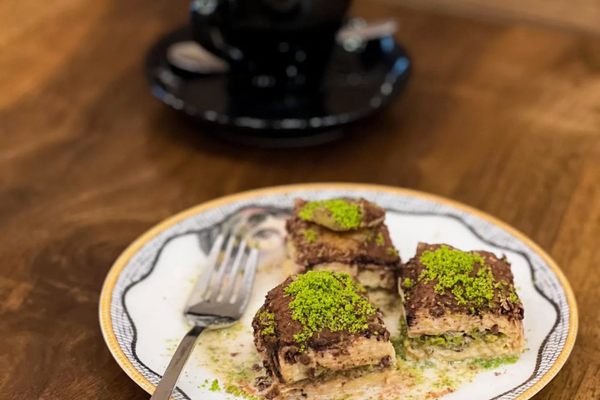The Fight to Save the Original Bramley Apple Tree
An iconic fruit tree is suffering from an incurable fungal disease.

Bramley apples aren’t much to look at. They’re muted green, with one side flushed a dull red, like a slapped cheek. And if you pulled one off the tree and bit into it, you might regret it. This is a cooking apple, and sour when raw. It’s only when baked that the fruit comes into its own, with its flesh suddenly golden, sweet, and yielding. For generations of British people, these have been the foundation of countless apple pies, crumbles, sauces, and compotes.
All of these dishes find their roots in the British town of Southwell, in Nottinghamshire. Here, the BBC reports, grows the original Bramley apple tree from which all other trees are descended. For 209 years, it has quietly flourished in the cottage garden of a local resident. First planted by Mary Ann Brailsford, a local child, in 1809, its apples bear the name of the local butcher, who bought the house and garden.
But there’s a problem: This tree has an incurable fungus, which is almost certain to be fatal. It makes its way into the tree’s internal water transport system and then chokes up the pipes. Once they’re entirely clogged up, the tree will die, and with it a steady stream of visitors from around the world, who have come to pay homage at its trunk.

While “we can never be 100 percent certain with a tree,” bio-scientist Ted Cocking told the broadcaster, he acknowledged the outlook seemed bleak. The question now is how best to take care of this magnificent plant in its final years. “Even if it is dying,” Cocking said, “we all want to die with dignity. It needs to be nursed in its terminal years.”
To help out, Nottingham Trent University has purchased the plant and promised continual tending from staff and students for the rest of its life. People who wish to visit the tree while it still stands may want to do so quickly. But if you can’t make it, all is not lost: Planned grafts from the tree will be dotted across the university’s campus, extending its legacy for decades or centuries to come.
Gastro Obscura covers the world’s most wondrous food and drink.
Sign up for our regular newsletter.





















Follow us on Twitter to get the latest on the world's hidden wonders.
Like us on Facebook to get the latest on the world's hidden wonders.
Follow us on Twitter Like us on Facebook